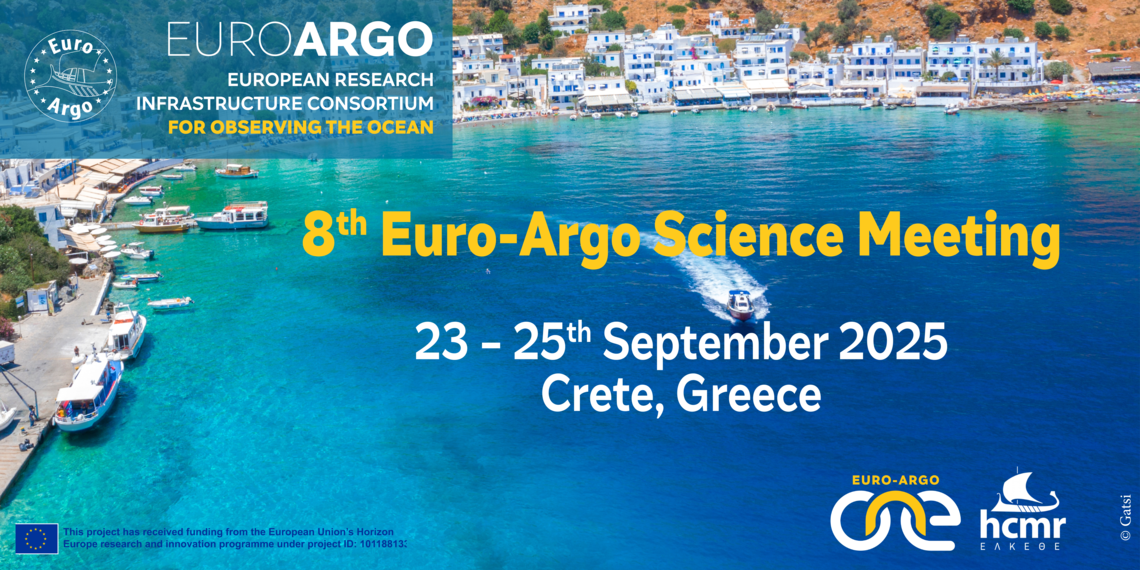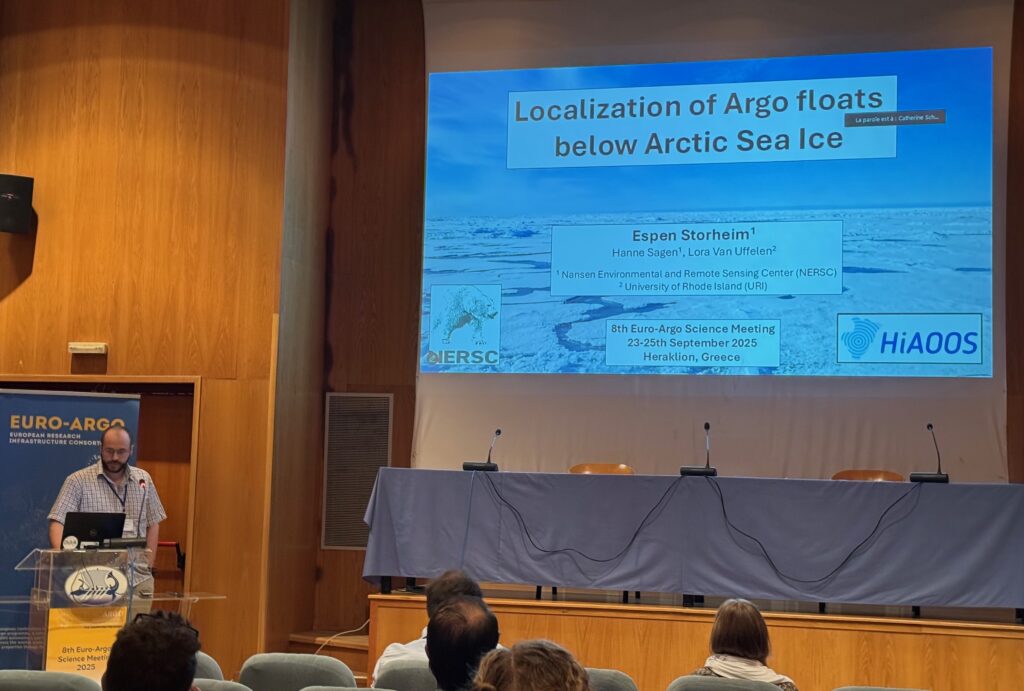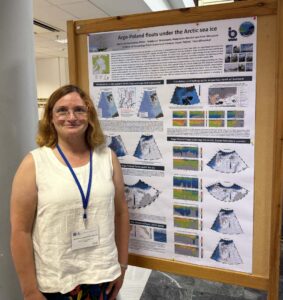HiAOOS Meets with EuroArgo in Crete

The 8th Euro-Argo Science Meeting takes place from 23-25 September 2025, in HCMR premises in Crete, Greece, as part of the Euro-Argo ONE project.
HiAOOS’ Espen Storheim, Nansen Environmental and Remote Sensing Center, (NERSC), Norway, provided a talk on “Localization of Argo floats below the Arctic sea ice,” introducing a newly-deployed acoustic positioning network in the Eastern Arctic that provides robust under-ice localization for Argo floats and autonomous platforms. This development overcomes the limitations of satellite access in ice-covered regions and marks an important step toward extending sustained ocean observations into the Arctic. You can read the full abstract below.

Another HiAOOS partner, Agnieszka Beszczynska-Möller, Instytut Oceanologii Polskiej Akademii Nauk (IOPAN), Poland, presented a poster on “Argo-Poland floats under the Arctic sea ice.”
HiAOOS is delighted to have participated in the Euro-Argo conference and to collaborate with the Euro-Argo community. We look forward to continuing this partnership and exploring further opportunities for complementary research and initiatives in the future.
Localization of Argo floats below the Arctic sea ice.
E. Storheim1, H. Sagen1, and Lora Van Uffelen2.
1NERSC, Norway, 2The University of Rhodes Island, USA.
Argo operations in the Arctic remain limited, particularly in regions covered by perennial sea ice. Floats carried into the northward-flowing West Spitsbergen Current often drift beneath the ice north of Svalbard, where they are unable to surface for satellite communication or obtain GPS and timing fixes. This severely limits the value of their collected profiles and challenges
long-term autonomous monitoring in the region.
To overcome these limitations, a multipurpose acoustic positioning network was deployed in the Eastern Arctic in September 2024 as part of the HiAOOS project, funded by Horizon Europe. The network consists of four deep-water moorings, three of which are equipped with lowfrequency (35 Hz) acoustic sources transmitting every other day. This infrastructure enables robust under-ice geo-localization for profiling floats and other autonomous platforms, independent of satellite access.
This presentation provides an overview of the acoustic network design and demonstrate its capability to support Argo-like missions beneath sea ice. The system represents a key step toward extending the Argo program into ice-covered Arctic waters by enabling reliable positioning and increasing the scientific value of under-ice float observations.
Argo-Poland floats under the Arctic sea ice (Poster n° 17).
A. Beszczynska-Möller1, W. Walczowski1, M. Merchel1, P. Wieczorek1.
1 Institute of Oceanology Polish Academy of Sciences (IOPAN)
Argo floats have revolutionized global oceanography but their use in the Arctic is limited due to the sea ice cover. Since 2009, the Argo-Poland consortium has deployed 29 floats in the eastern Greenland Sea along 75°N. Typically, one Argo float is deployed in the core of Atlantic water carried by the West Spitsbergen Current (WSC) eastern branch, while another is launched in the WSC western branch. The eastern float usually makes a rapid passage through Fram Strait and reaches the Marginal Ice Zone where it continues to drift beneath the sea ice. If not lost during the under-ice transit, some floats resurface the following summer and transmit profiles collected under the sea ice. One float deployed in 2020, survived for four years and operated in the Laptev Sea until the autumn 2024.
Due to the lack of satellite positioning under the ice, Argo float trajectories are linearly interpolated during preliminary processing. In post-processing, we refine position estimates using a bathymetry- constrained method. Entering the Arctic Ocean, floats typically drift along the continental slope where depths shallower than 2000m facilitate more accurate positioning. Profiles collected beneath the ice provide unique insights into the evolving properties and structure of Atlantic water as it progresses eastward, encircling the Arctic Ocean. Here, we compare under-ice Argo profiles with available ship- borne and mooring observations, focusing on evolution of the upper ocean and mean currents. With its enhanced under-ice capabilities, Argo network is emerging as an important component of a future integrated Arctic Ocean Observing System.
